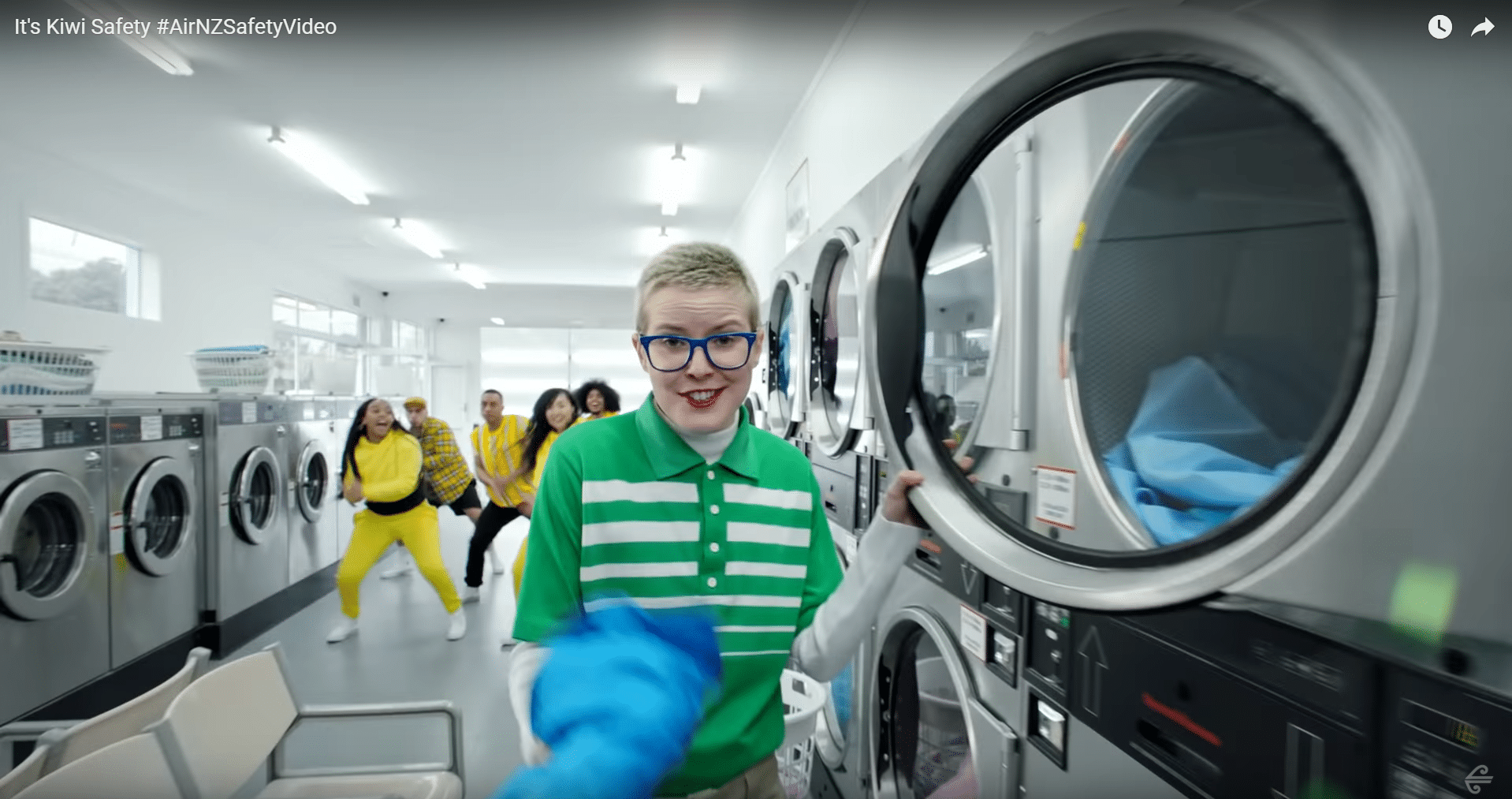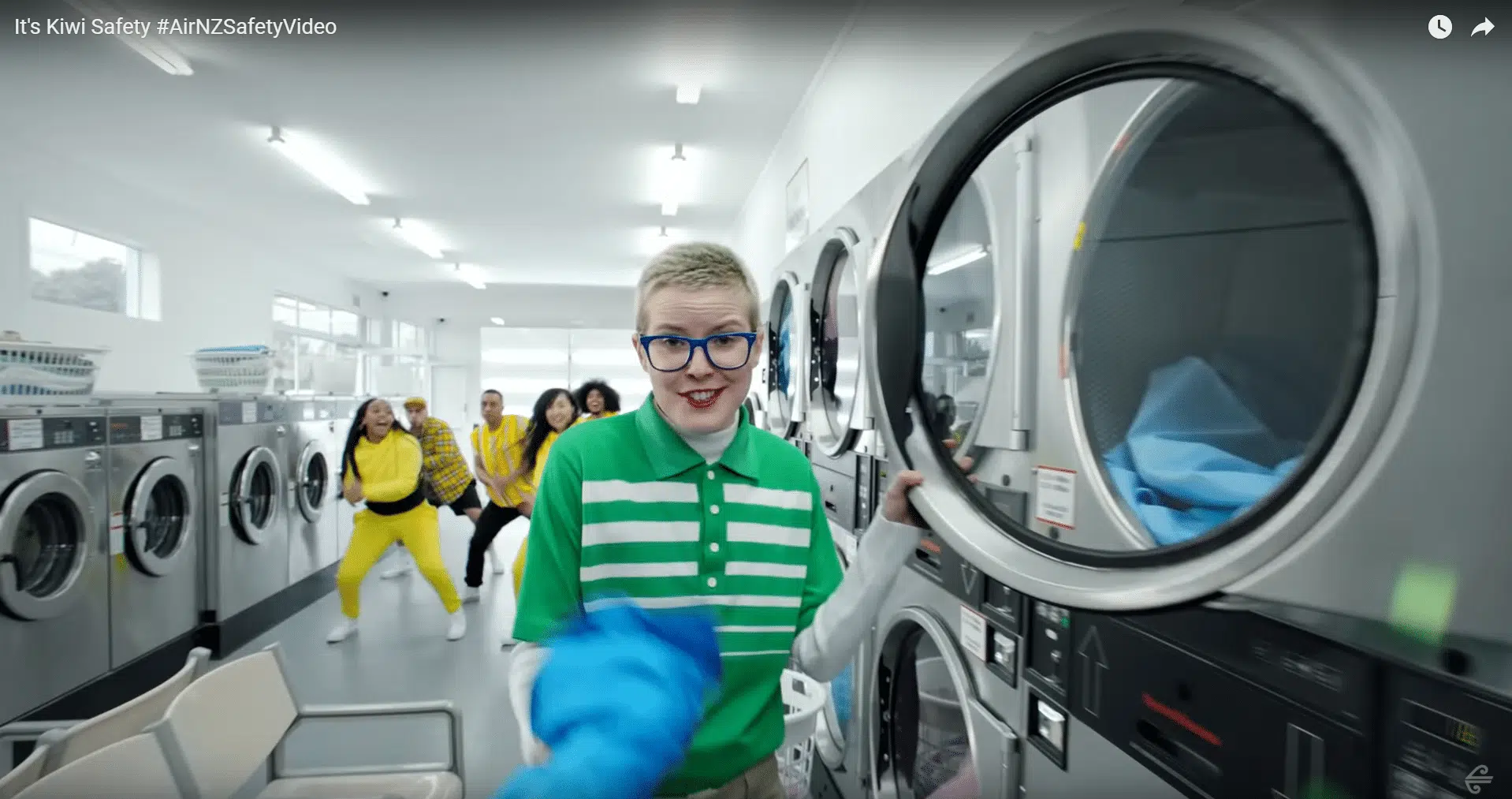It happened again. This time it was Air New Zealand, an airline famous – in the past – for really good safety videos. After watching the start of it, one of our consultants instinctively turned off the audio and later asked the team to try and do the same. Before we start we’d like you to try as well:
Some of our team members described what they saw as some sort of music video or a musical. Another pointed out that it could easily be a washing powder ad since there seems to be more footage of washing machines than there is of planes, destination or anything immediately associated with an airline.
For comparison, we’d also ask you to watch this video from Virgin America (RIP) that, while maintaining the musical theme, manages to communicate both a decent safety message and the airline’s brand:
Analysis: What’s going on?
Airline safety videos have been all the rage amongst airline marketers for quite a while now, but amongst all the hype and trendiness it is wise to stop and ask a few questions. The biggest of them is “why” – why are the airlines making the videos in the first place?
Part of the answer is clear: safety videos tend to get some media attention and are the only piece of content that passengers are (theoretically) required to pay attention to in every flight. This means that they are prime real estate for marketing teams.
Goals of safety videos
The challenge is what to do with the attention. Airlines generally take one of two approaches, prioritizing either the safety message or a marketing message. In the first case, we end up with videos where most of the content is filmed on a plane or something that looks a lot like a plane, where instructions are clear and uninterrupted.
These generally give an image of a safe, reliable airline and often use nice visual transitions to keep the viewer’s attention. They are great tools for some airlines even if they may not get as much media attention as other genres.
A good example is this Turkish Airlines video :
Marketing-focused videos are almost always centred on destination marketing and shot outside the plane. Although the airlines themselves will never admit it in these videos the safety message plays a secondary role, with most of the attention being focused on the destination.
The classic example of this is provided by Air New Zealand’s old safety videos that pioneered and helped popularize the genre:
Unfortunately, we sometimes encounter a third type of video that is the result of misplaced goals and priorities. These are videos where the creators work hard to get attention but forget to pass on a message to the viewers.
In these cases, viewers will often get some message, but not one that is necessarily good for the airline or even related to it. However, on paper, they will appear to have performed well in terms of views, reach and media coverage.
Things to keep in mind
When creating safety videos we always encourage airlines to keep 3 things in mind:
- What they want to say about the airline
- How it will translate across cultures
- If it will be still good/interesting after several viewings
The cultural element is an especially sensitive one for airlines, and safety videos can often contain references, jokes and other elements that are completely missed or misunderstood in other cultures. Airlines will – for example – often use famous people or make references to recent cultural events that may be immediately understood at home but be completely missed by non-local travellers.
The third point is one that gets forgotten very often. Marketing teams will usually create safety videos with online viewers and media in mind but they don’t always remember that the videos will also be screened on every flight.
This means that on a normal return flight with a connection it will be seen 4 times by each passenger and that a frequent flier could easily see it dozens of times. This is not generally a problem when the video shows nice views of the destinations but it can become an issue in cases where the content stops being interesting after the plot twist, joke or surprise is known.
What went wrong
In the case of the Air New Zealand video that we saw at the start, the airline was likely trying to convey a message about its brand, focusing on things like youth, inclusion, diversity and the local Kiwi talent. These messages are of course important and good, even in a safety video, but it seems that in the creative process the airline’s team got carried away and lost track of some of the basics.

What about the praise?
Overall if this video was meant as a fun online-only piece to show how the airline values diversity we’d be happy to agree with the likes of CNN and congratulate the airline on its achievement.
However, as consultants specialized in airline communication and marketing we are all too aware that passengers will be strapped to their seats inside a plane and forced to watch this video over and over again. This not to mention cabin crews who will have to spend months watching the video several times a day.
That said, we remain great fans of ANZ’s marketing and of the awesome people that work there. We sincerely hope that this will have just been an occasional slip-up and not a permanent trend.
NOTE: An earlier version of this article appeared in the July 2018 edition of Airline Marketing Monthly as part of a safety video roundup. You can sign up to it here.
